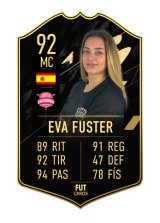In the rapidly evolving landscape of entertainment, creative design has become a cornerstone for captivating audiences and redefining how stories are told. From immersive theme parks to innovative digital experiences, the role of creative design extends beyond aesthetics, shaping emotional engagement and cultural relevance. This article explores how creative design fuels modern entertainment, illustrating its impact through practical examples and current technological advancements.
Table of Contents
- Foundations of Creative Design: Elements that Inspire Engagement
- Historical Perspectives: How Past Innovations Laid the Groundwork for Modern Experiences
- The Intersection of Culture and Creativity: Building Meaningful Experiences
- Modern Technologies as Catalysts for Creative Design
- Case Study: Big Bass Rock and Roll – A Fusion of Fishing, Music, and Culture
- Behind the Scenes: The Creative Process of Designing Modern Entertainment Experiences
- Non-Obvious Dimensions of Creative Design in Entertainment
- Measuring Success: How Creative Design Impacts Audience Reception and Industry Growth
- Conclusion: The Continuous Evolution of Creative Design and Its Role in Shaping the Future of Entertainment
Foundations of Creative Design: Elements that Inspire Engagement
Visual Aesthetics and Thematic Coherence
Effective creative design begins with compelling visual aesthetics that resonate with audiences. Cohesive themes—whether inspired by historical eras, cultural motifs, or fantasy worlds—serve as anchors that enhance storytelling. For example, immersive environments such as themed attractions or digital interfaces utilize consistent color palettes, typography, and imagery to evoke specific moods and reinforce narratives.
Interactivity and Immersive Environments
Interactivity transforms passive viewers into active participants. Technologies like motion sensors, augmented reality, and interactive displays create environments where audiences can influence their experience. Such immersive environments deepen emotional connections and foster memorable moments, as seen in modern theme parks or interactive gaming experiences.
Emotional Connection and Storytelling in Design
At its core, creative design aims to evoke emotions and tell compelling stories. Visual cues, sound design, and narrative elements are woven together to create a cohesive experience that resonates on a personal level. This integration of storytelling within design is crucial for establishing lasting impressions and encouraging audience engagement.
Historical Perspectives: How Past Innovations Laid the Groundwork for Modern Experiences
Evolution from Traditional Entertainment to Digital Innovations
Entertainment has transitioned from live performances and static visuals to dynamic, digitally-enhanced experiences. The advent of television, film, and later, computer-generated imagery (CGI), expanded creative possibilities. Today, digital innovations like virtual reality (VR) and augmented reality (AR) push these boundaries further, transforming how audiences perceive and interact with entertainment.
Pioneers of Creative Design in Entertainment History
Innovators such as Walt Disney revolutionized visual storytelling through meticulous set design, character development, and animation techniques. Similarly, the 1950s introduced a pop culture explosion—music, fashion, and visual motifs—that continue to influence contemporary design. These pioneers laid the foundation for integrating culture and storytelling into immersive experiences.
Case Study: The Influence of 1950s Pop Culture on Contemporary Design
The 1950s era, characterized by vibrant colors, bold patterns, and a sense of optimism, significantly impacts modern entertainment design. For instance, the homage to 1950s Las Vegas rockabilly culture in modern attractions creates nostalgic yet fresh experiences that appeal across generations. This cultural recycling demonstrates how past innovations continue to shape current creative endeavors.
The Intersection of Culture and Creativity: Building Meaningful Experiences
How Cultural Themes Inspire Design Choices
Cultural themes serve as powerful sources of inspiration, enabling designers to craft experiences that resonate with specific communities or evoke shared memories. From indigenous art motifs to global pop trends, these themes help establish authentic and engaging environments.
The Role of Nostalgia and Novelty in Modern Entertainment
Balancing nostalgia with innovation is key to captivating audiences. Nostalgia evokes warmth and familiarity, while novelty sparks curiosity. For example, integrating 1950s rockabilly elements into contemporary attractions creates a layered experience that appeals emotionally and intellectually.
Example: Incorporating 1950s Las Vegas Rockabilly Culture in Big Bass Rock and Roll
The modern attraction how to trigger the bonus on big bass exemplifies this blend by embedding rockabilly aesthetics, vintage music references, and retro visuals. This thematic choice not only pays homage to a vibrant cultural era but also enhances user engagement through rich, layered storytelling that taps into collective nostalgia.
Modern Technologies as Catalysts for Creative Design
Virtual Reality, Augmented Reality, and Their Impact on Immersive Experiences
VR and AR technologies enable the creation of fully immersive worlds that users can explore interactively. These tools allow designers to craft complex environments where storytelling becomes experiential, not just visual. For example, VR-based experiences in theme parks transport visitors into historical settings or fantastical realms with unprecedented realism.
Digital Art and Interactive Media as Design Tools
Digital art techniques, including real-time rendering and generative design, expand creative possibilities. Interactive media—touchscreens, motion tracking, and responsive lighting—foster engagement and personalization. These innovations enable designers to realize ambitious visions that were previously impractical or impossible.
How Technology Enables the Realization of Complex Creative Visions
Advances in computational power and software development have lowered barriers to complex design execution. This synergy of art and technology results in experiences like multi-sensory installations and interactive narratives, elevating entertainment to new heights of engagement.
Case Study: Big Bass Rock and Roll – A Fusion of Fishing, Music, and Culture
Concept Overview and Design Inspiration
Big Bass Rock and Roll is a modern entertainment attraction that seamlessly integrates fishing themes with vibrant rockabilly music and visual aesthetics reminiscent of 1950s Las Vegas. Its design draws inspiration from classic Americana, emphasizing lively colors, vintage fonts, and nostalgic music cues to create an engaging, culturally rich environment.
How It Exemplifies Innovative Storytelling and Thematic Integration
The attraction exemplifies how cohesive thematic elements can enhance storytelling. By weaving together elements of fishing adventure, musical performance, and cultural homage, it offers visitors a layered narrative experience that deepens engagement and fosters emotional resonance.
The Role of Creative Design in Enhancing User Engagement and Entertainment Value
Creative design choices—such as interactive features, thematic consistency, and cultural references—amplify user engagement. The attraction’s immersive environment encourages participation, making the experience memorable and emotionally impactful. Such examples demonstrate how well-executed creative design elevates entertainment from mere spectacle to meaningful storytelling.
Behind the Scenes: The Creative Process of Designing Modern Entertainment Experiences
From Concept Development to Execution
Designing modern entertainment involves multiple stages: ideation, conceptual sketches, prototyping, and final implementation. This process requires balancing artistic vision with technological feasibility, often involving iterative testing and refinement to achieve the desired immersive effect.
Collaboration Across Disciplines: Artists, Technologists, and Storytellers
Effective collaboration among diverse specialists ensures that creative ideas are seamlessly integrated. Artists contribute visual storytelling, technologists develop interactive systems, and storytellers craft narratives that guide the experience. Such interdisciplinary synergy is vital for translating conceptual visions into compelling realities.
Challenges and Solutions in Translating Creative Ideas into Immersive Experiences
Challenges include technological limitations, budget constraints, and ensuring audience safety. Solutions involve innovative use of existing tools, modular design approaches, and thorough testing. Learning from case studies like Big Bass Rock and Roll illustrates the importance of adaptability and creative problem-solving in this process.
Non-Obvious Dimensions of Creative Design in Entertainment
Psychological Effects of Design Choices on Audience Perception
Design elements influence perception subconsciously—colors can evoke calm or excitement, while spatial arrangements can guide attention. Understanding these psychological effects allows creators to craft experiences that subtly manipulate emotional responses, enhancing engagement.
Ethical Considerations in Creating Immersive Experiences
As immersive designs become more realistic, ethical questions arise regarding manipulation and consent. Designers must balance creating compelling experiences with respecting audience autonomy, ensuring transparency about the nature of the experience.
Future Trends: How Emerging Creative Paradigms Will Shape Entertainment
Emerging paradigms include AI-driven personalization, haptic feedback, and mixed reality environments. These developments promise even deeper emotional and sensory engagement, pushing the boundaries of what is possible in entertainment design.
Measuring Success: How Creative Design Impacts Audience Reception and Industry Growth
Qualitative and Quantitative Metrics of Engagement
Metrics include visitor retention rates, emotional response surveys, social media engagement, and repeat visitation. Quantitative data provides measurable insights, while qualitative feedback offers depth on emotional and aesthetic impact.
Case Examples of Successful Design-Driven Entertainment Products
| Product | Key Design Feature | Audience Impact |
|---|---|---|
| Big Bass Rock and Roll | Thematic depth, interactivity, cultural homage |

